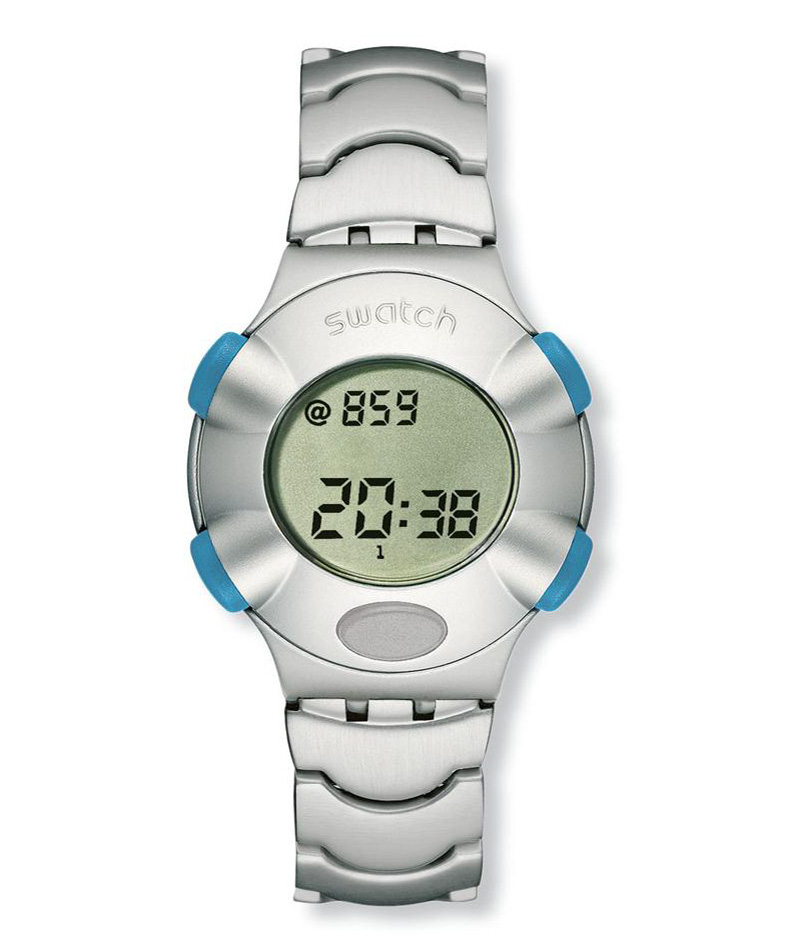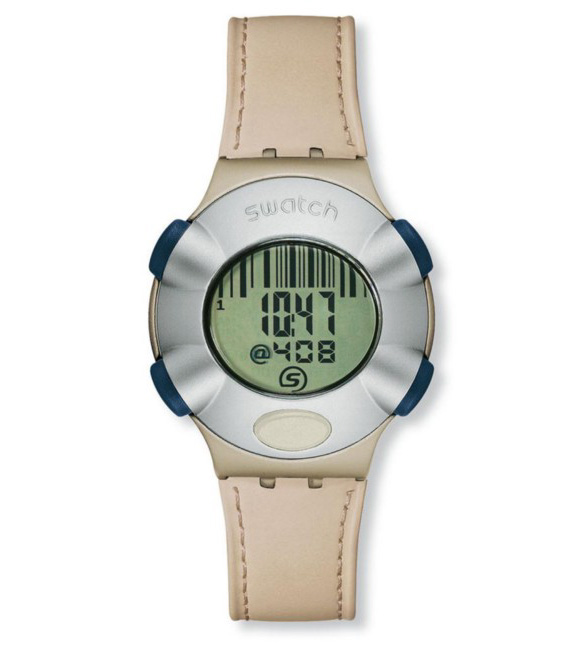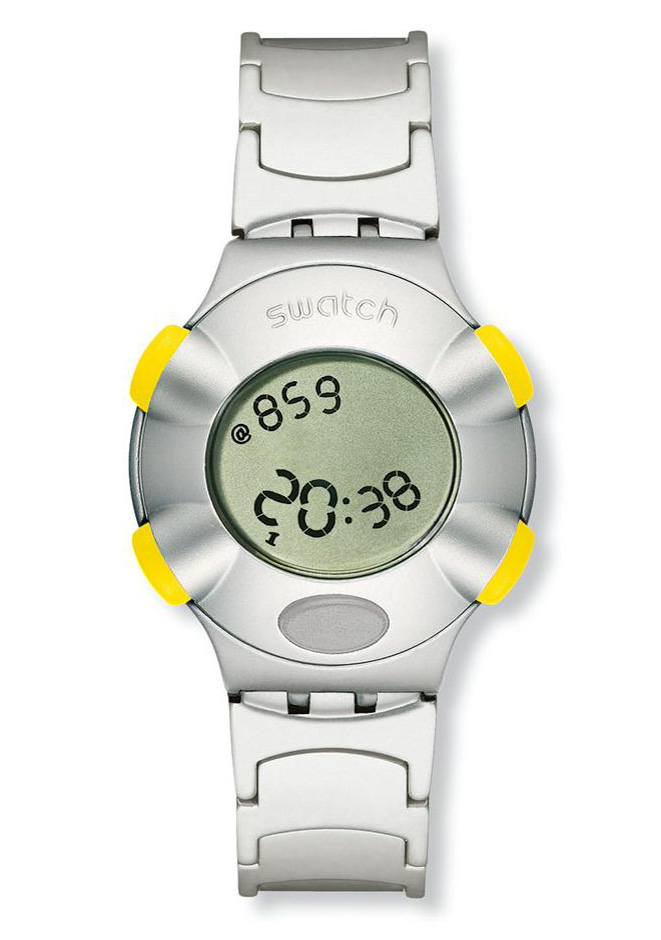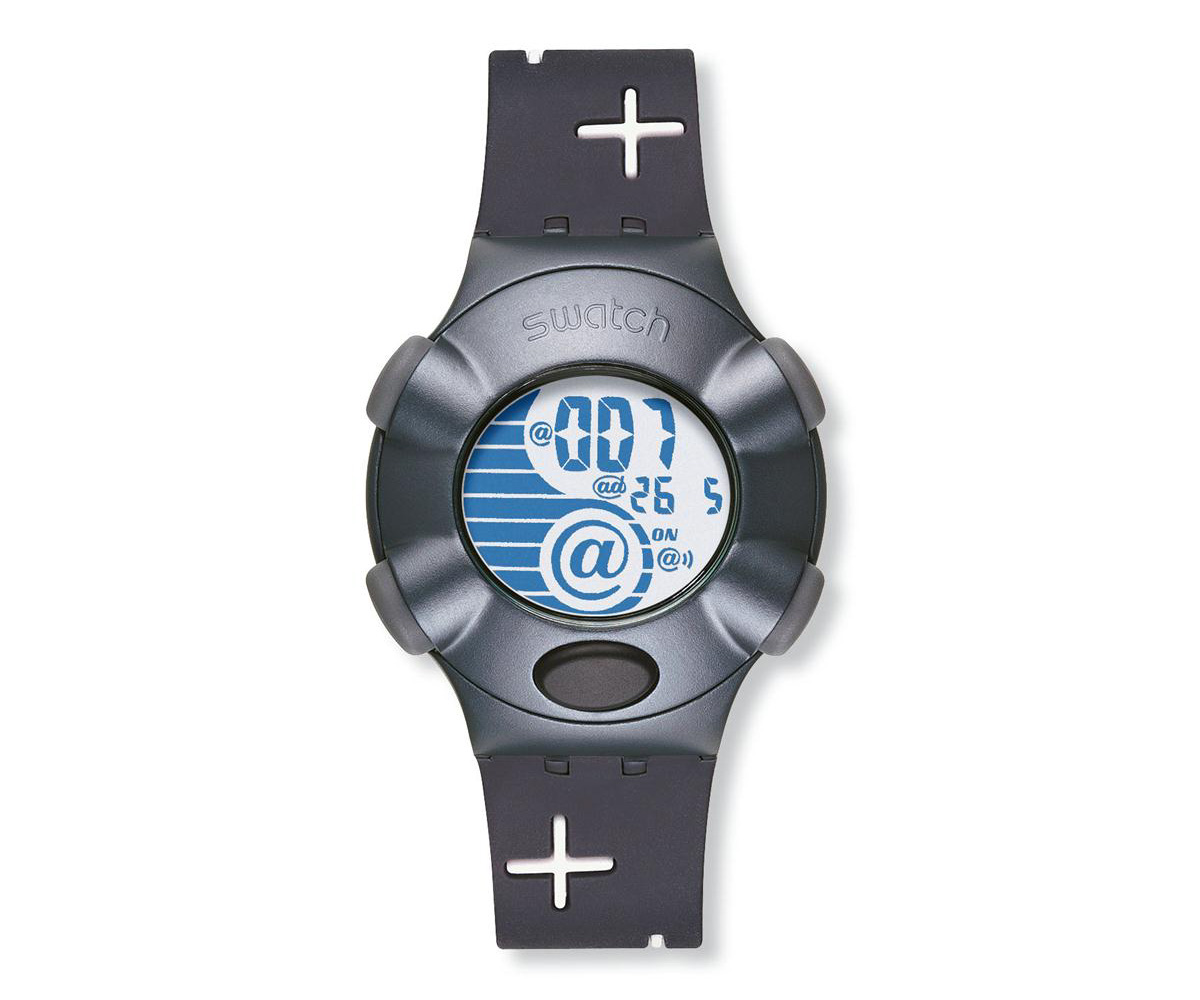
If you happen to stumble upon a Swatch Beat watch from about 20 years ago, you’ll notice a strange indicator on what was then rather cool digital screens that does not correspond to the traditional set of timing and calendar features programmed into most timepieces. The indicator starts with the “@” symbol and then has a number from 000-999. Many a person coming across a Swatch Beat timepiece minus enough context will have been perplexed by this indicator. What it refers to is part of the story of how the Swatch Group invented a new “Internet time” system know as “.beat time.”
As far as I know, the Swatch Beat watches were the only timepieces actually made that apply .beat time. The watches indicated time via the standard 12- (or 24-hour) time-telling system but also had the @ beat time indicators on them. Today, there are various websites that keep .beat time alive, and there are probably a few smartwatch applications out there that offer .beat time on your wrist. For the most part, this time-telling protocol isn’t used anywhere these days, but its story is worth telling and the lessons from it are worth learning. This article is more about .beat time itself, as opposed to the Swatch Beat watches that included it. It remains an interesting intellectual exercise to imagine what timepieces would have been like if .beat time were better adopted.

In fact, if .beat time had been adopted, it would have actually meant a mini-boom for the watch industry. Think about it — for several hundred years, the majority of timepieces produced have been based on our standard 12/24-hour daily cycle. If a new time-telling system was adopted — even by part of society — entirely new measuring and time-tracking devices would be necessary. The prospect of Swatch being able to produce watches with brand-new indicators wanted and needed by members of the public is a potential driver of huge sales volume. Imagining what new watches would have been produced if .beat time had been picked up is one of the entertaining “what ifs” incumbent in this interesting story.
It was 1998 when the Swatch Group introduced .beat time. Looking back on the story, many people associated the development of .beat time with a marketing experiment. Of course, it was a marketing exercise, but I would not be so quick to say that .beat Internet time was merely a device intended to sell new watches. Rather, the Swatch Beat watches were intended as a marketing exercise to see if the world was ready to adopt a new time-telling system.
Innovations in time-telling do occasionally catch on. While we take the 12-hour time system for granted, we have to remember that our now-ubiquitous time-telling system first needed to be invented, tested, and then adopted by the society as a whole. It might have been hundreds of years since humans invented the time-telling system we have today, but we should not forget that all new things have to start somewhere and had to win out against the competing system. Even back in the 18th century, people were trying to create new time-telling systems to replace the 12-hour solar-based system that we use. Decimal time-telling systems were developed back in the 18th century as a means of replacing the 12/24-hour system, but they never really caught on.

Swatch’s .beat time is an extension of the decimal time system because it uses a base 1000 number as the foundation of daily time. The idea is simple if you consider that there are multiple ways of segmenting the 24 hour period of one earth day (the foundational time period that our time-telling system is currently based on). What alternative time-telling systems do is not make day-lengths any longer or shorter, but they replace our existing concept of hours and minutes with something else. In the case of .beat time, each earth day period is segmented in 1000 units (as opposed to 24 hours). Swatch called these units “beats.” Each beat is the equivalent of 86.4 seconds according to our standard system (and one minute is 0.694 beats, while an hour is 41.6 beats). 1000 beats elapse each 24-hour period with @000 (zero beats) coinciding with 12am, @500 beats coinciding with 12pm, and @999 beats roughly coinciding with 11:59pm.
Swatch Beat dials, accordingly, had @XXX time indicators on the dial. The idea was that you could view either both standard and .beat time, or just beat time on the dial. Swatch was so serious about .beat time that it even intended on launching a satellite in orbit that would be the official broadcast source of accurate .beat time. The satellite never got deployed, but it was an interesting facet of a truly ambitious plan led by then group chairman Nicolas G. Hayek, Sr. and the Media Lab at MIT.

Why exactly did the Swatch Group feel that Internet time was worth investing in and developing a new product around? Recall that it was the mid-1990s when the commercial Internet started, and it was also a time of truly prolific worldwide Web innovation (as well as eventual failures). New companies and technologies were popping up all the time. While things like novel Internet time protocols never caught on, it was true that many other protocols did catch on (just think of the many conventions around how Internet website addresses work, or popular computer programming languages). Internet time also serves an arguably important purpose: to help reduce confusion about what time it is given that the Internet is an important technology that “flattens” distance.
The most important element of .beat time was not actually its 1000 beats per day cycle, but rather how there were no time zones. Swatch chose a non-arbitrary locus point that .beat time was based upon, and, of course, that was in Biel, Switzerland where the Swatch Group is headquartered. They called this BMT (or Biel Mean Time), in contrast to GMT (Greenwich Mean Time) that is centered in England. The idea is that no matter where you are in the world, there is only one time zone to track. That means that while @500 beats is noon in Switzerland, it would be the early morning time along the west coast of the United States, and evening time in many parts of Asia. The goal was to create one central means for indicating the time that Internet events and systems could base timing around, helping to reduce the considerable confusion that can occur when people from multiple time zones are included.

Many people had direct experience with this problem during the global pandemic, when Zoom-style Internet meetings were heavily relied upon. A far too common issue with people in different time zones is not being clear what time a meeting actually starts. Is it 4pm EST or PST? .beat time was able to overcome this issue because it was entirely clear when @700 beats is since it is the same time everywhere. Given that time zones and Internet system synchronicity seemed to be in opposition, a central, standardized way of telling the time is actually quite useful.
Another benefit of a decimal-based system for indicating the time is that (like the metric system) various types of times are easy to add, subtract and generally work with mathematically. Given the 12-hour, 60-minute, and 60-second system of our standard solar-based means of telling the time, converting time or doing math with time is a bit challenging, often requiring a calculator. The metric system was designed to help people convert measures and scales more efficiently, and similarly, .beat time offered the same calculatory efficiency. So, given its appeal and logical advantages, why did .beat time fail to truly take hold?

History has a number of examples of superior systems or standards not taking hold against legacy alternatives which are not as clever or useful. One of my favorite examples is the proliferation of the “QWERTY” key layout most English keyboards use. The system was originally designed to put more commonly used letters in easy to reach spots with less used letters in less used corners. Since the development of QWERTY, new keyboard layouts have been developed that are arguably superior and might even replace QWERTY. And yet, the tried and tested, albeit less efficient, way of keyboard layouts lives on strong. Once enough people became familiar with QWERTY, it was also impossible to unseat the king. Human convention and comfort tend to beat absolute functionality, historically speaking.
What appears to be more important than practicality in the advancement of human technology is mere social consensus. That millions upon millions of people believe and prefer something, collectively, appears to have far more value than sheer efficiency itself. That isn’t to say that people’s minds cannot be changed, but asking people to adopt far superior technology in contrast to a staid incumbent is, more often than not, a slow, unsteady, and drawn-out process full of protests and back-stepping.
This same scenario is probably what doomed Swatch’s .beat time, like the other decimal-based time-telling systems before it. Society as a whole had fully embraced the 12-hour system so completely that to abandon it seemed almost unnatural. More so, as arbitrary as the 12-hour system is, people grow up having a sensation for how long an hour is, how long a minute is, etc. — so much so that, for some people, telling time is like an additional sense. Over time, we simply start to associate the visual experience of seeing one minute elapse, and the physical experience of waiting for a minute to elapse. To relearn this with a roughly 86-second beat, as a human adult, is almost impossible for most people. Unless .beat time were introduced to children from a young age, asking adults to adopt it is akin to asking an entire population of people to suddenly abandon their mother tongue and learn something new.

Let us also recall how time-telling systems are inherently arbitrary. The period it takes for the earth to spin one time is arbitrary in the scheme of the universe. When the Gregorian calendar system we now use was originally invented, it just chose a “start date” that coincided with (I believe) the birth of one particular human. I recall when the year 2000 was impending and many people in society treated the changing of the calendar to a new millennium as though it were somewhat spiritual and a lot of special things were going to happen because of a new number. What amused me about the “year 2000 sensation” was the core arbitrary nature of the calendar switching from the year 1999 or 2000. It might as well have been the year “20” or “20,000” as far as the universe was concerned. There is nothing truly holy in a physical or universal sense about most of our measuring systems. They are only holy as far as individuals or societies are concerned when it comes to their personal experiences. Thus, the popularity of the 12-hour time-telling system has little to do with its ability to be the best time-telling system. Rather, it is a human invention that we consider dear, since people have grown up with it for so many generations that the system feels like a natural law of the universe.
The wristwatch itself is the natural product of this human-made invention of telling the time. These little machines we wear to indicate time are actually the greatest form of human flattery because they are little machines designed to display something that humankind invented. Speak to a physicist and ask if “time” actually exists. They will answer “no.” The experience of time elapsing is a function of how life perceives cause and effect. Wristwatches that track time reinforce a human-centric perspective on the universe because it allows us to perceive the world with an understanding we as lifeforms invented, and then we as humans found a way of harnessing for our own predictive needs.
That .beat time never caught on is simply a function of our technological ingenuity making it possible to overcome timezone differences through clever software programming, as well as people being choosing to take things like time zones into consideration when making international meetings. That said, where I feel that Swatch’s Internet time bet most failed was its restriction of allowing time to be more relative to the user. Let me explain.
.beat time forced most people to frame their particular lives within the larger context of where .beat time was centralized (Switzerland). If you live in in Switzerland you will probably enjoy .beat time the most since days elegantly start at @000 and end at @999. What about for people who live in other parts of the world? For everyone else, their days start and end somewhat arbitrarily at some random beat time. This is a constant reminder that you do not live in the center of the universe and that time is being controlled by some distant authority. People tend to dislike this.
Having your day start and stop at the same time as other other people around the world — given how time zones work — allows many people to feel as though where they live is either the center of the world, or at least no less important than other people’s center of the world. Internet time was good for machines because it set an efficient standard, but it was bad for humans, because it challenged their own personal ethnocentric view of reality. In my opinion, that was the real reason that .beat time and Swatch Group’s great experiment with internet time never really caught on.
